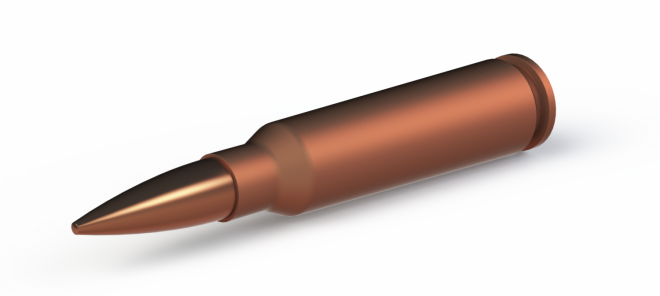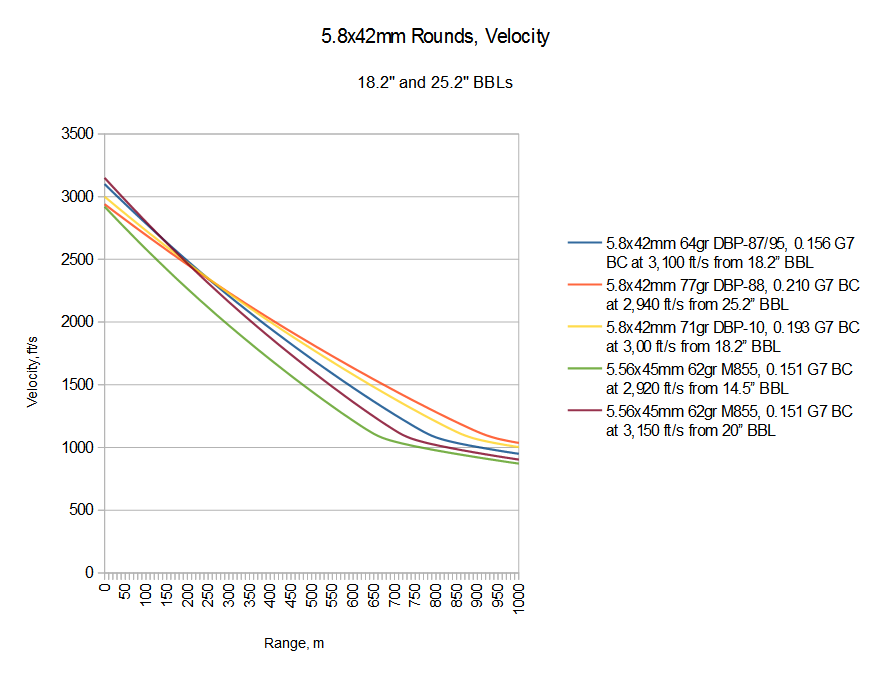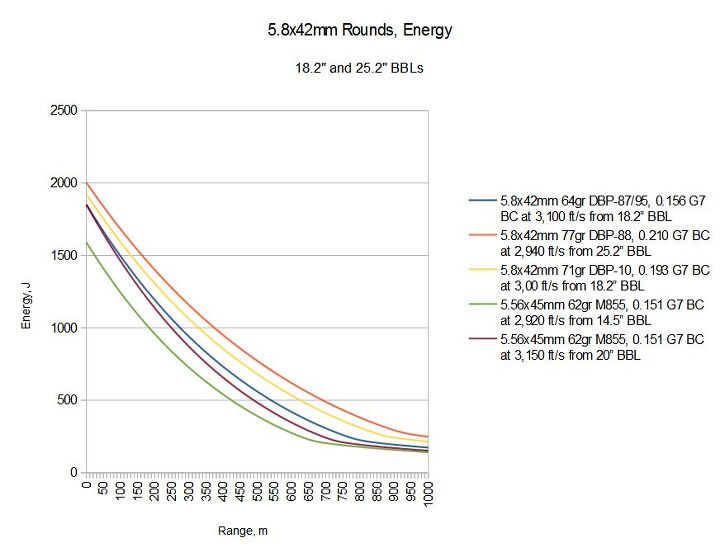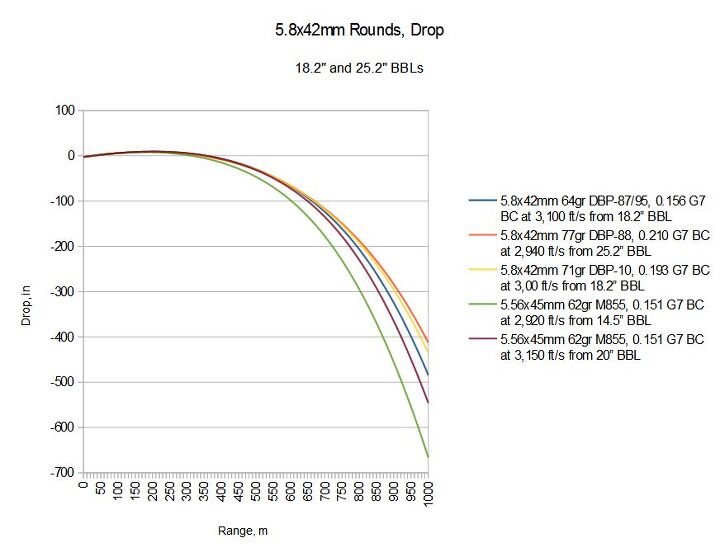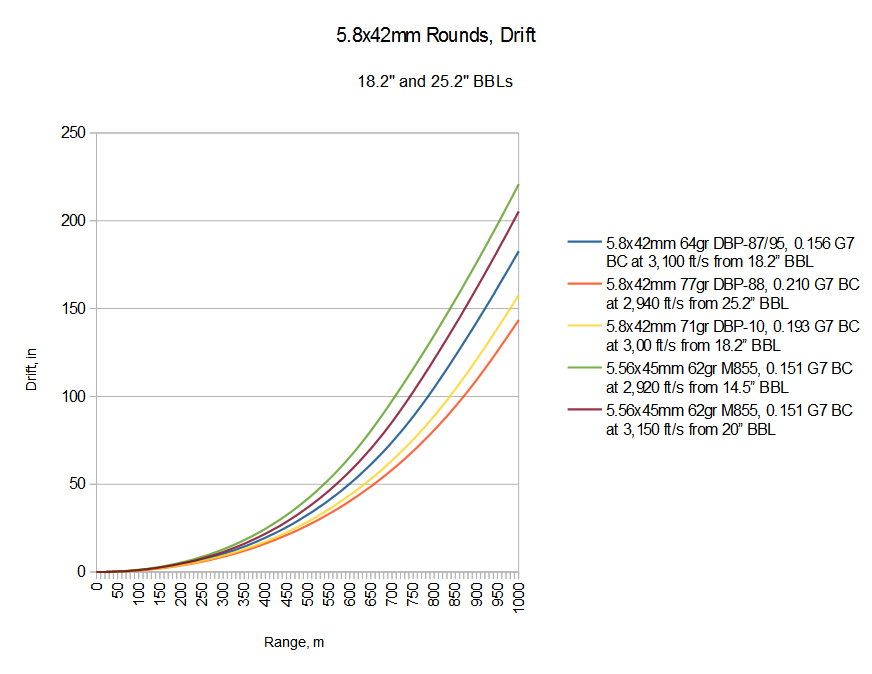In the mid-1950s, the People’s Republic of China followed the Soviet Union’s example and adopted the intermediate 7.62x39mm round. This decision substantially helped to promote that cartridge’s ubiquity throughout the world, as millions of cheap Chinese-made SKS and AK rifles were exported to every corner of the globe. However, at the very end of Chairman Mao Zedong’s regime, an effort was started to develop a new, modernized caliber that would improve performance and conserve materials versus the 7.62×39. That program resulted in the 5.8x42mm caliber, standardized in the late 1980s with the DBP-87 and DBP-88 rounds. Unusually, the 5.8x42mm used a system with two different overall length standards, one of about 58mm for the DBP-87 rifle cartridge, and the other of about 62mm for the DBP-88 support round. This allowed the marksman’s rifle to shoot the DBP-87, if necessary, but also allowed for a longer, lower drag bullet to be put in the DBP-88 case, improving the ballistics of the QBU-88 marksman’s rifle and the QJY-88 general purpose machine gun.
By the 2000s, this “one and a half” caliber system was proving suboptimal, and so a program to develop a new universal round for both the QBZ-95 assault rifle and QBU-88 marksman’s rifle was begun, resulting in the DBP-10 projectile, which combines the best aspects of the DBP-88 and DBP-87, while being compatible with all weapons. This DBP-10 round is the standard infantry caliber for the People’s Liberation Army today, although stockpiles of older ammunition still exist.
On to the ballistics:
Despite having better performance than 5.56mm at extended distances, the 5.8mm DBP-10 cartridge isn’t much heavier, at just 12.9 grams per shot (7.5% more).
Note: All ballistic calculations are done with JBM’s Trajectory calculator, using the ballistic coefficient appropriate to the projectile being modeled, and assuming an AR-15 as a firing platform. Also, keep in mind that there is no single true velocity for a given round; velocity can vary due to a large number of factors, including ambient temperature and chamber dimensions. Instead, I try to use nominal velocity figures that are representative of the capability of the round in question.
 Your Privacy Choices
Your Privacy Choices
